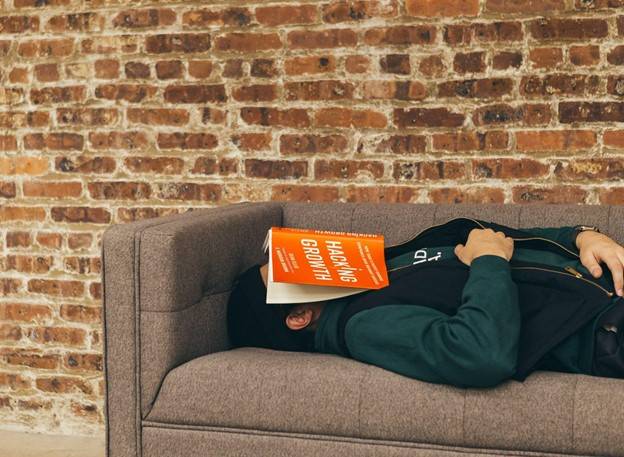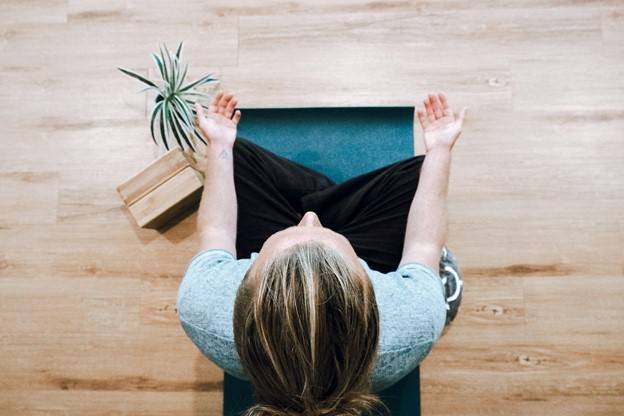
October 2021. This article is independently written by Shelby Golding. All opinions given are hers. Shelby has been certified as a personal trainer and nutritional specialist since 2007. In 2008, she found her passion for writing about these topics and hasn't looked back.

The opioid crisis has swept the country in the last quarter-century. According to the CDC, millions of Americans are using opioids to treat chronic pain, and it’s safe to assume that a good number of them are abusing or addicted to their relief. In 2018, two out of three overdose deaths in the US involved an opioid. The crisis has had some benefits, though. Scientists, doctors, and patients alike have increased the search for pain relief solutions that do not involve a pill.
Modern science now believes that mindfulness and meditation for pain relief could be one of the solutions we were looking for all along.
Mindfulness vs Meditation
Mindfulness requires awareness. You can practice it by setting aside your phone and turning off the TV during dinner. Instead, spend the entire meal focused solely on the flavors of your meal, chewing, swallowing, and putting your fork and knife down between bites.
Meditation, on the other hand, is more straightforward. Meditation uses mindfulness to focus the mind on a specific thought, idea, activity, or object to calm the mind. Like you would do bicep curls to train and strengthen your muscles, you use meditation to train and strengthen your awareness and attention. Meditation is proven to reduce anxiety, depression, and pain.
A combination of these techniques has surprising benefits when it comes to pain relief.
Does Meditation Reduce Pain?
Meditation increases the thickness of the dorsal anterior cingulate cortex and secondary somatosensory cortex in the brain. In long-term meditation practitioners, these changes result in a decreased sensitivity to pain. Additionally, the parts of the brain that anticipate pain experienced less unpleasantness from painful stimuli during meditation.
In the same way, the person who tenses up during a car crash acquires more injuries than one who is taken by surprise and stays limp, the mind that anticipates pain causes itself more harm. Long-term meditators can process pain with less anxiety.
Stress, depression, anxiety, and neuroticism affect our mental health and wellbeing as we age. Meditation is known to be a helpful tool for the reduction of these psycho-active states. Even if the patient notices no drastic difference in the amount of pain they feel, reducing stress and anxiety related to pain can help improve a patient's quality of life long-term.
Mindfulness and meditation for pain relief also trigger the body’s natural opioid system. A 2016 study gave a group of meditators either a placebo or an opioid and tested their reaction to pain. The study showed that the subjects given the placebo experienced less pain than those using the opioid.
Thus far, all evidence points to meditation as an alternative to opioids and other medicated pain relief solutions. The biggest difference? In meditation and mindfulness, you are looking at the pain directly instead of ignoring it.

How to Use Meditation for Pain
Make it a habit: The best results were seen in people who practice meditation regularly. Regular meditation is defined as a daily practice equal to or longer than half an hour. On average, a person needs 60 days to build a new habit. Try meditation for 5 minutes (or longer) for two months to get started.
Take a course or use an app: Free online courses and meditation apps are great resources for all types of meditation. Beginners usually benefit from guided meditation to give them the basics before setting off on their own internal journey. Mindful meditation, visualization, breathwork, and body scanning are only a few of the best techniques for beginners.
Invite a buddy: Adopting a new habit is always easier with a buddy. However, holding yourself accountable is not always easy. By pairing up with an accountability buddy, you both gain extra incentive to succeed.
Create a safe meditation space: An element of ritual is common among long-term meditators. Creating a safe space to practice in, where no distractions or disturbances can interfere with your meditation, will help you make the most of your time.
A Free Alternative
Always consult your physician before making any changes to your current medication and pain management routines.
While you decide on the best pain relief system, don’t forget to use your Kailo pain patch! Countless patients report near-instant pain relief, and pain management experts theorize that Kailo works with your body’s natural electrical systems to communicate with your brain. Try it and see the results for yourself!
Sources:
https://www.cdc.gov/opioids/providers/prescribing/guideline.html
https://www.hhs.gov/opioids/about-the-epidemic/opioid-crisis-statistics/index.html
https://psychiatryonline.org/doi/10.1176/appi.ajp-rj.2018.130401
https://www.amjmed.com/article/S0002-9343(16)30302-3/fulltext






